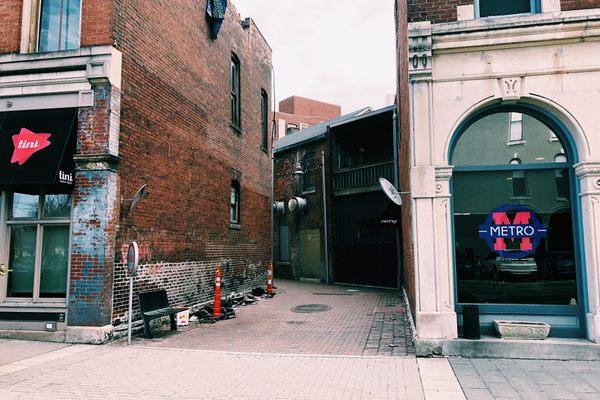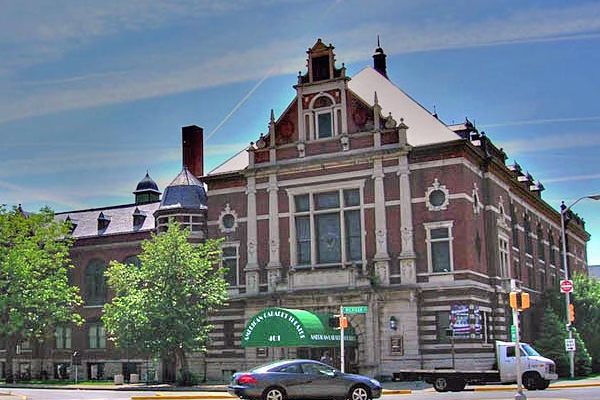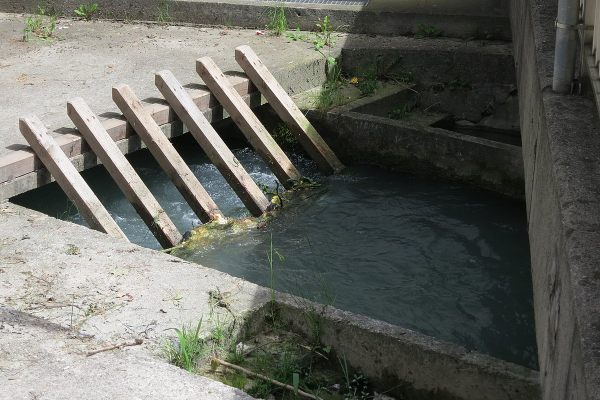Pogue's Run
This hidden stream beneath Indianapolis makes an appearance in the best-selling novel "Underground Airlines."
There’s a moment in Underground Airlines, Ben Winters’ novel of an alternate history in which slavery in America was never abolished, when the protagonist has no choice but to go physically underground. An escaped slave who becomes a slave catcher after his own capture, he is hunting another, and the search leads him to a creek running under Indianapolis. It’s called Pogue’s Run, and it was buried because it didn’t fit into the design of the city.
Pogue’s Run is real. It runs under Indianapolis for two-and-a-half miles, and it’s possible to walk from one end to another. All underground streams have a mystery about them, but Pogue’s Run has a more ghostly history than most. Its story begins with one of Indianapolis’ first white settlers, whose disappearance has never been solved, and a Scottish-born city planner with a tidy vision.
George Pogue arrived on the banks of Pogue’s Run in 1819, with a wife, seven children, and a herd of horses. Back then, the stream was called Perkins’ Run, after another white settler who’d lived there briefly. One morning, after some of his horses had disappeared, Pogue took off after a Native American man who’d come by the farm: Pogue thought he might know who had taken the horses. That was the last time anyone reported seeing Pogue; though settlers sent out search parties, they never found his body. He had disappeared, just two years after he moved to the area. His name stayed, though; that stream was now called Pogue’s Run.
Not far from Pogue’s cabin was the site that Indiana’s newly organized General Assembly had picked, in 1820, for the capital of the four-year-old state. The assembly drew up a scheme for the new city, an elegant design that echoed Washington D.C’s: Indianapolis would be a square grid, a mile on each side, with a circular plaza in the center and four wide, stately boulevards radiating out towards each of the square’s corners. Except—in the southeast corner of the city, the gridded blocks tilted, askew. There was a black line snaking through the plan, throwing the grid off kilter. That was Pogue’s Run, ruining the city’s planned symmetry.
In the 19th century, as Indianapolis grew into and out of the original Mile Square plan, Pogue’s Run troubled the city. In the rainy seasons, it would overflow its banks, flooding streets and damaging property. And as sewers dumped their contents into the water, the run became one of the city’s most polluted waterways. Eventually, city planners decided they’d had enough. By 1905, they were planning a “straightjacket” for the stream, to keep its water contained, and in 1915, they trapped the run underground.
On the newly open space, the city built its train station, its football stadium, and its highways. Like George Pogue, Pogue’s Run disappeared, and after a few decades, no one thought much about the creek running underneath downtown Indianapolis.
Indianapolis is not the kind of city that has a lot of big, built up myths—the White River does not define the city in the way that the Charles River defines Boston, or the Potomac defines D.C. But Pogue’s Run, in its obscurity and weirdness, has in the past decade or so become a piece of history that people want to preserve and hold onto. There’s now a Pogue’s Run Grocer, a co-operatively run store, and a Pogue’s Run porter, made by a local brewery.
Yet the story of the stream’s namesake is still murky; in the two centuries since George Pogue’s disappearance, no one has come up with a definitive ending. Every few decades, when unclaimed human bones turn up, there’s speculation that they might be Pogue’s. But most people presume he was killed by Native Americans, and that no one will ever know exactly where or how he died.
Inside the pitch-black tunnel built more than a century ago, the water can be deep, or, depending on the rainfall, can slow to almost nothing, leaving dry concrete pathways on either side. The entrance is wide and intimidating. The walls are made from concrete, and just inside, the tunnel looks like a bunker built on an alien world, where a trusty blaster would come in handy. Walk some 200 yards deeper in, and the light is gone, ceding to total blackness.
The ceiling is cracked, and side tunnels, made of brick, occasionally branch off the main route. Cell phones don’t get service in the tunnel; the only way to get a sense of your location is to turn down one of those side tunnels, find a grate that cracks up into the city, stick a phone out of it, and take a picture. Then, all of a sudden, the tunnel ends, and the water pours out on the other side of town, into the White River.
Know Before You Go
Pogue's Run goes underground northeast of the Mile Square in the 1000 block of East New York Street.




















Follow us on Twitter to get the latest on the world's hidden wonders.
Like us on Facebook to get the latest on the world's hidden wonders.
Follow us on Twitter Like us on Facebook